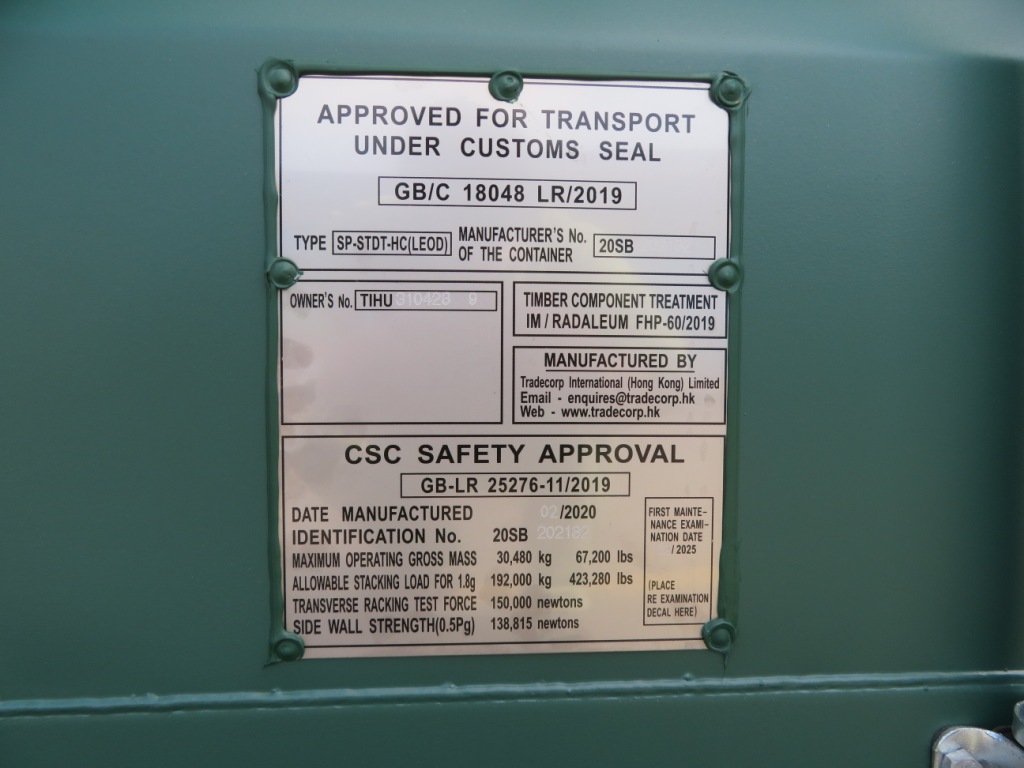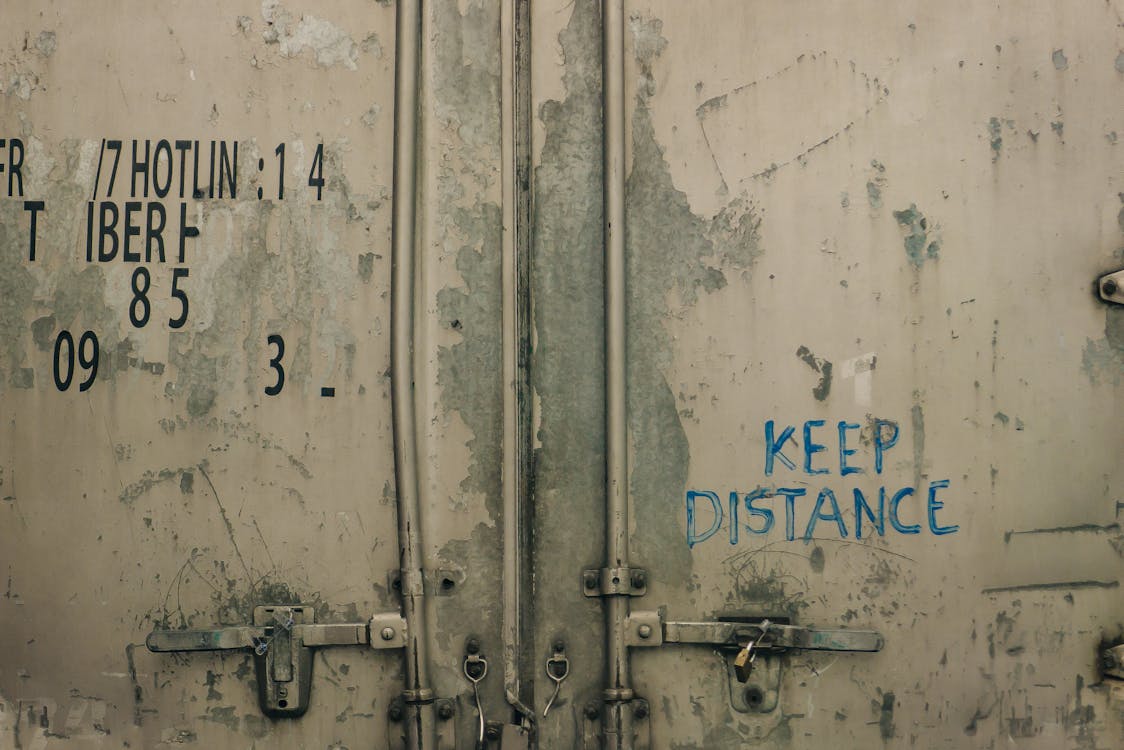Everyone loves cheap stuff, especially when it’s high-quality! Affordable storage containers are one example, as they combine durability with affordability for potential customers.
However, being affordable is only one side of the overall picture. While affordable shipping containers are good and usually well-maintained, people often overlook one thing – their CSC plates.
This is especially apparent in shipping containers that have been used for decades. Bad actors may have deliberately faked the CSC plates so they could sell or lease the low-quality used containers.
Worse, they faked them to circumvent logistical regulations in sea or rail transport. If left unchecked, this trend can cause severe disruptions to the entire industry.
So, why do some people fake CSC plates in shipping containers, and how can we avoid them? Read more in this article!
Also Read: Dangerous Goods Unsuitable for a Standard Ship Container
Brief Description of CSC Plates

When you look closely at a shipping container, you might have noticed a metal plate bolted onto the doors or sides. That’s the CSC plate, a crucial component that ensures the container is safe for transport and storage!
Last time, we at Tradecorp talked in detail about the importance of CSC plates in shipping containers.
To jog your memory a bit, CSC (Convention for Safe Containers) is an international standard from the International Maritime Organization (IMO) to regulate shipping containers’ structural integrity.
A genuine CSC plate contains several key details about the container, such as:
- Manufacturer’s details
- Date of production
- Maximum weight capacity
- Safety approval number
- The next inspection date
These plates confirm that the container has passed necessary safety checks and can withstand the demands of international shipping.
Without a valid CSC plate, authorities may not allow its loading on cargo ships, and in some cases, it might not even be legally transported by road or rail.
The Gradual Emergence of Fake CSC Plates in Shipping Containers

It goes without saying that the COVID-19 pandemic, which started in 2020, caused untold disruption to the shipping industry in so many ways.
One of them is the shipping container shortage. Because every country had to significantly reduce maritime trade and enforce lockdown, there’s no one to handle the sudden container congestion.
Even worse, manufacturers are having a hard time fulfilling the industry’s supply and demand because of changing trade patterns. Changing customer behaviors also forced shippers to once again learn the ropes in meeting their demands effectively.
Amongst all this, an unfortunate side effect has emerged – fake CSC plates. As many container manufacturers struggle to build new ones, some people decided to reuse decommissioned containers and equip them with fake CSC plates.
These fake plates often appear on older, damaged, or uninspected containers that would otherwise fail CSC safety standards. By slapping the fake plates on used containers, dishonest sellers make them appear safe and compliant and fool unsuspecting buyers.
Though the pandemic eventually subsided after some years, ongoing geopolitical developments caused the shortage to take place longer. Amongst the shortage, malicious actors take advantage of buyers looking for affordable storage containers and convince them that the container is safe to use.
Furthermore, there are always exploitable legal loopholes in ports or railway stations. While CSC is the globally accepted standard, its implementation still differs from one country to another.
As a result, bad actors can exploit this flaw by cooperating with complicit port or rail operators to let containers with fake plates slip through.
Fake Plates in Legitimately Good Containers?
While fake CSC plates in low-quality used containers are bad enough, what if it is used containers in good condition that have the fake plates?
The answer is – the blame goes even deeper on the malicious sellers’ side. Now imagine this – would you want a legitimately good car that unfortunately comes with fake permits and credentials?
Then, the answer is no. Because the permits and credentials are fake, then what are the chances the car is potentially fatally flawed in one aspect?
For that reason, it’s the same thing with affordable storage containers. If the containers have seemingly legitimate CSC plates, chances are the containers aren’t as strong as the plates say.
Even if the containers themselves have no problems, authorities may question you for using containers with fake CSC plates. What happens next is a legal battle where you must prove that you had sincere oversight in assessing the container’s worthiness.
Why Do People Fake CSC Plates and Potential Causes?

Fake CSC plates exist for one simple reason – profit. Sellers can take an unapproved, unsafe container and pass it off as a legally certified one to boost its resale value.
But beyond just making a quick buck, several factors contribute to the rise of fake CSC plates:
High Demand for Low-Cost Containers
Not everyone can afford brand-new or fully inspected containers, leading to a thriving second-hand market.
Buyers who need affordable storage containers might unknowingly buy a container with a fake CSC plate just because it seems like a steal.
Lack of Awareness
Many people don’t fully understand CSC certification or how important it is. Some buyers assume that as long as a container looks good from the outside, it’s safe for transport.
This lack of knowledge allows dishonest sellers to take advantage of unsuspecting customers.
Avoiding Costly Inspections and Repairs
Legitimate CSC certification demands routine inspections and maintenance to ensure a container’s usability.
Some sellers skip these costly procedures and instead forge a new CSC plate to make the container appear compliant.
Rapid Growth of Online Container Sales
The rise of online marketplaces has made it easier for scammers to operate. Since many container sales happen remotely, buyers often can’t physically inspect the container before purchasing.
Because of that, malicious sellers can fake the CSC plates before sending them to unsuspecting customers.
Potential Ramifications of Fake CSC Plates

Let’s just say that there are many consequences of using used shipping containers with fake CSC plates intentionally or unintentionally:
Rejection from Shipping Companies
If your container doesn’t have a valid CSC plate, major shipping lines and freight companies will not accept it for transport.
This means you may have to spend extra money to inspect and repair the container before you can use it.
Safety Risks
Containers with fake CSC plates are often weaker and structurally unsound, making them dangerous to use.
If you stack or load them incorrectly, they can collapse, buckle, or fail under heavy weight, causing property damage or injuries.
Legal Trouble
Using a shipping container with a forged CSC plate can result in fines or legal action, especially if it causes an accident.
In some cases, law enforcement agencies may seize the container, leading to additional financial losses.
Shorter Lifespan
Containers that fail CSC certification are often older, rusted, or poorly maintained, thus pushing bad actors to fake their CSC plates.
Even if you plan to use the container for other than transport, it might not last long before leaks, structural weaknesses, or corrosion become an issue.
How to Spot Fake CSC Plates and What to Do

By now, you can see how the downsides of using used containers with fake CSC plates far outweigh its benefits. So, what should you do in spotting these fake plates when you’re looking for some affordable storage containers?
Verify the CSC Plate’s Details
For starters, a real CSC plate will have key details such as:
- Manufacturer name
- Container model and serial number
- Maximum gross weight and payload
- Date of manufacture and approval number
Fake plates may lack this information or include inconsistent formatting, spelling errors, or incorrect weight capacities. If something looks off, don’t ignore it.
Cross-check the Plate with Official Records
Reputable sellers register their containers in international databases. You can verify a container’s CSC certification by cross-checking its details with the manufacturer or an accredited inspection company.
Look for Tampering or Modifications
Some scammers replace or modify old CSC plates rather than making new ones from scratch. Look for signs of:
- New bolts or weld marks around the plate
- Scratches or faded areas where an old plate was removed
- Mismatched fonts or spacing that don’t align with the original plates
Request Inspection or Certification Proof
A legitimate seller should be able to provide an inspection report or proof of CSC certification. If they hesitate or refuse to share documentation, it’s a red flag.
Buy from Reputable Sellers
The best way to avoid fake CSC plates is to buy from trusted container suppliers. Reputable companies:
- Offer genuine CSC-certified containers
- Provide detailed inspection records
- Have positive customer reviews
- Are willing to let me inspect the container in person
Get a Professional Inspection
If you’re unsure whether a container’s CSC plate is real, hire a container surveyor or inspection service. They can check for any structural damage, compliance with CSC standards, and any signs of fraudulent modifications.
But most importantly, they can help you match the CSC plate’s information with the container’s actual performance. When a plate says the container is 5 years old, the surveyor can help you assess if the container is really that old or actually much older than that.
Avoid Unrealistic Deals
If a deal seems too good to be true, it probably is. If a seller is offering a “CSC-certified” container at a price far below market rates, be cautious. Cheap containers often come with hidden risks, including fake certification.
Also Read: Various Uses of Metal Shipping Containers in the Energy Industry
Conclusion
Rather than causing your company to collapse overnight because of using affordable storage containers with fake CSC plates, ordering containers from trusted suppliers like Tradecorp is the way to go. Since its foundation, Tradecorp always committed to the full implementation of CSC and ISO standards in building and certifying its shipping container products. Buy or rent Tradecorp’s containers today by contacting us via quote form to meet your business needs!


